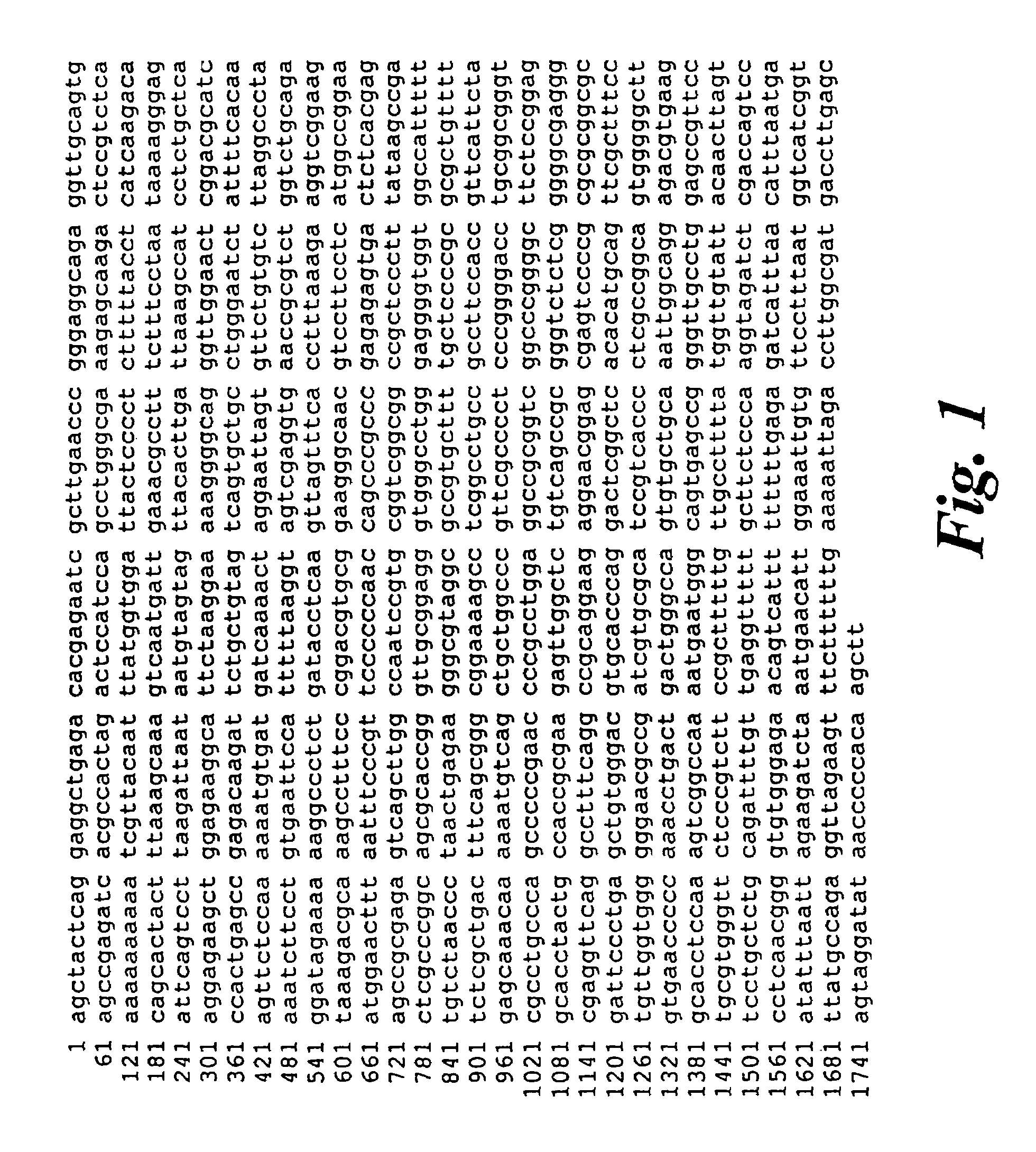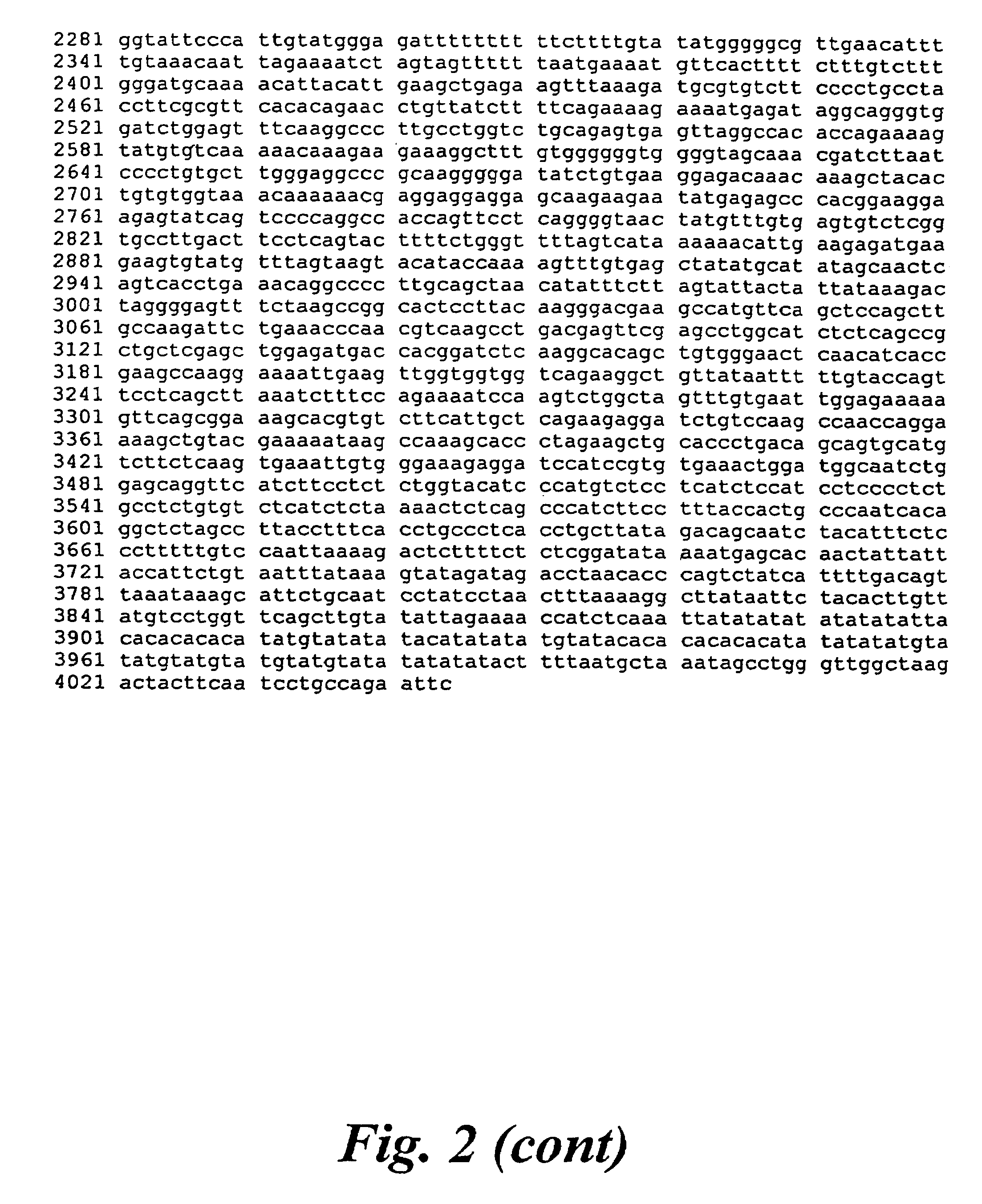Promoter regions of the mouse and human telomerase RNA component genes
a technology of telomerase and promoter region, which is applied in foreign genetic material cells, sugar derivatives, enzymes, etc., can solve the problems of few studies which directly address the mechanisms regulating telomerase expression in normal, no disclosure of promoter elements, and no functional evidence to show the promoter. , to achieve the effect of increasing or reducing the magnitude of the effect, increasing or reducing the activity of the promoter, and facilitating the determination of the promoter
- Summary
- Abstract
- Description
- Claims
- Application Information
AI Technical Summary
Benefits of technology
Problems solved by technology
Method used
Image
Examples
Embodiment Construction
[0102]Preparation of tissue sections for in situ hybridisation Formalin fixed paraffin embedded tissue blocks were obtained from Pathology Department files. Tissue sections were deparaffinised, rehydrated through graded concentrations of ethanol, (100%, 90%, 70%, 50%, 30% EtOH, 10 sec. each), rinsed in 0.85% sodium chloride for 5 minutes, followed by PBS for 5 minute. Sections were fixed in 4% paraformaldehyde / PBS for 20 minutes, rinsed in PBS, and treated with proteinase K (40 μg / ml) in 50 mM Tris-HCl pH 7.5, 5 mM EDTA for 7.5 minutes at room temperature. After rinsing for 5 minutes in PBS, sections were post fixed in 4% paraformaldehyde / PBS for 5 minutes, rinsed in water, and acetylated in freshly prepared 0.25% acetic anhydride / 0.1M triethanolamine for 10 minutes. The slides were rinsed in 0.85% saline, followed by PBS for 5 minutes each and dehydrated in gradually increasing concentrations of ethanol prior to hybridisation.
Probe Preparation for In Situ Hybridisation
[0103]The rib...
PUM
| Property | Measurement | Unit |
|---|---|---|
| Fraction | aaaaa | aaaaa |
| Fraction | aaaaa | aaaaa |
| Fraction | aaaaa | aaaaa |
Abstract
Description
Claims
Application Information
 Login to View More
Login to View More - R&D
- Intellectual Property
- Life Sciences
- Materials
- Tech Scout
- Unparalleled Data Quality
- Higher Quality Content
- 60% Fewer Hallucinations
Browse by: Latest US Patents, China's latest patents, Technical Efficacy Thesaurus, Application Domain, Technology Topic, Popular Technical Reports.
© 2025 PatSnap. All rights reserved.Legal|Privacy policy|Modern Slavery Act Transparency Statement|Sitemap|About US| Contact US: help@patsnap.com



